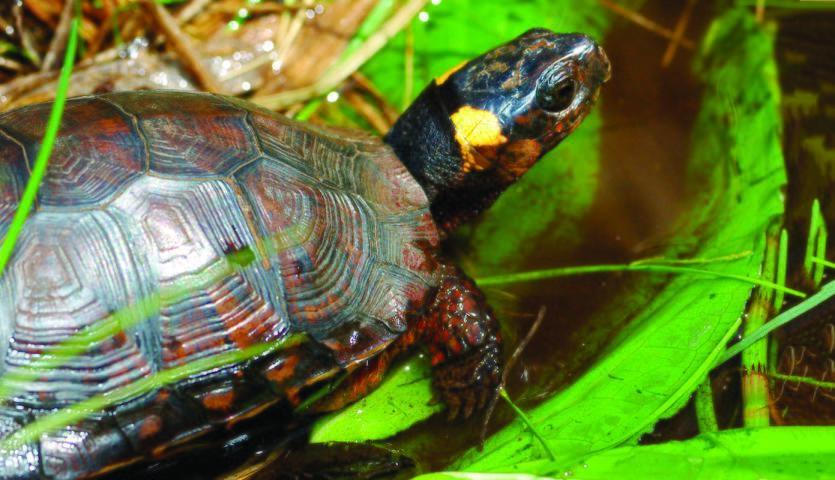MassWildlife’s Natural Heritage and Endangered Species Program conserves and protects the most vulnerable animal and plant species of Massachusetts and the habitats upon which they depend.
Description
Common name: Bog turtle
Scientific name: Glyptemys muhlenbergii
Size: Less than 4 inches
Distribution in MA: Bog turtles are found only in a few isolated areas of Berkshire County.
Distribution in North America: Bog turtles occur primarily in two regions of the United States: the northern population occurs from western Massachusetts to western Maryland, with satellite populations in the vicinity of the Finger Lakes and Lake Ontario in New York. The southern population occurs from northern Georgia to southern Virginia, where it occurs primarily at higher elevations in the Appalachian Mountains.
MA conservation status: Endangered
Federal conservation status: Threatened
Fun facts
-
The bog turtle is one of the smallest living turtles. You may think you've found a baby turtle, but adult bog turtles only grow up to about 4 inches! Male bog turtles have larger tails than females, and the underside of the shell (plastron) is concave, which is true of most turtles in the subfamily Emydinae.
-
Though often easily identified by the pronounced orange spot behind each eye, bog turtles can sometimes be confused with dark-colored spotted turtles and young painted turtles.
-
The shell is usually brown, grey, or mahogany, sometimes with radiating amber or dark-colored lines. The plastron is usually a pale yellow with black, irregular blotches.
-
Bog turtles can live more than 50 years in the wild.
-
Occasionally bog turtles disperse from their home wetland, but primarily seem to spend several decades (if not their entire lives) within a single wetland the size of a few football fields.
-
The bog turtle is estimated to have diverged from its closest living relative in Massachusetts—the wood turtle—roughly 15–20 million years ago. Still, the two species share many biological traits such as delayed maturity and long lifespan. Additionally, the sex of both wood and bog turtles is genetically-determined, in contrast with the other turtles native to Massachusetts, the sex of which is determined by incubation temperature in the nest.
Threats and conservation
-
The major threats to this species are habitat loss, invasive plant species, natural succession of fen communities, and illegal collection for foreign pet markets.
-
Predators of the bog turtle likely include most small carnivores including raccoon, mink, and otter.
-
The bog turtle is probably the least common native reptile in New England and is one of the most imperiled non-migratory vertebrates in Massachusetts.
How you can help
-
In the extremely rare event that you encounter a bog turtle, (dead or alive) take a picture and contact Mike Jones, MassWildife Herpetologist, at michael.t.jones@mass.gov. Bog turtle sightings are very unusual and could represent a significant conservation discovery.
-
Support conservation and management of habitats, including the use of fire to restore critical habitats and herbicide to control invasive generalist vegetation.
-
Support the conservation of large landscapes in Berkshire County, which support the uncommon hydrology necessary to support bog turtle populations.
-
MassWildlife's Natural Heritage and Endangered Species Program is responsible for the conservation and protection of over 400 rare animals and plants, including bog turtles. This work is primarily funded through grants and donations from supportive citizens. Support rare species conservation in Massachusetts—donate today!
